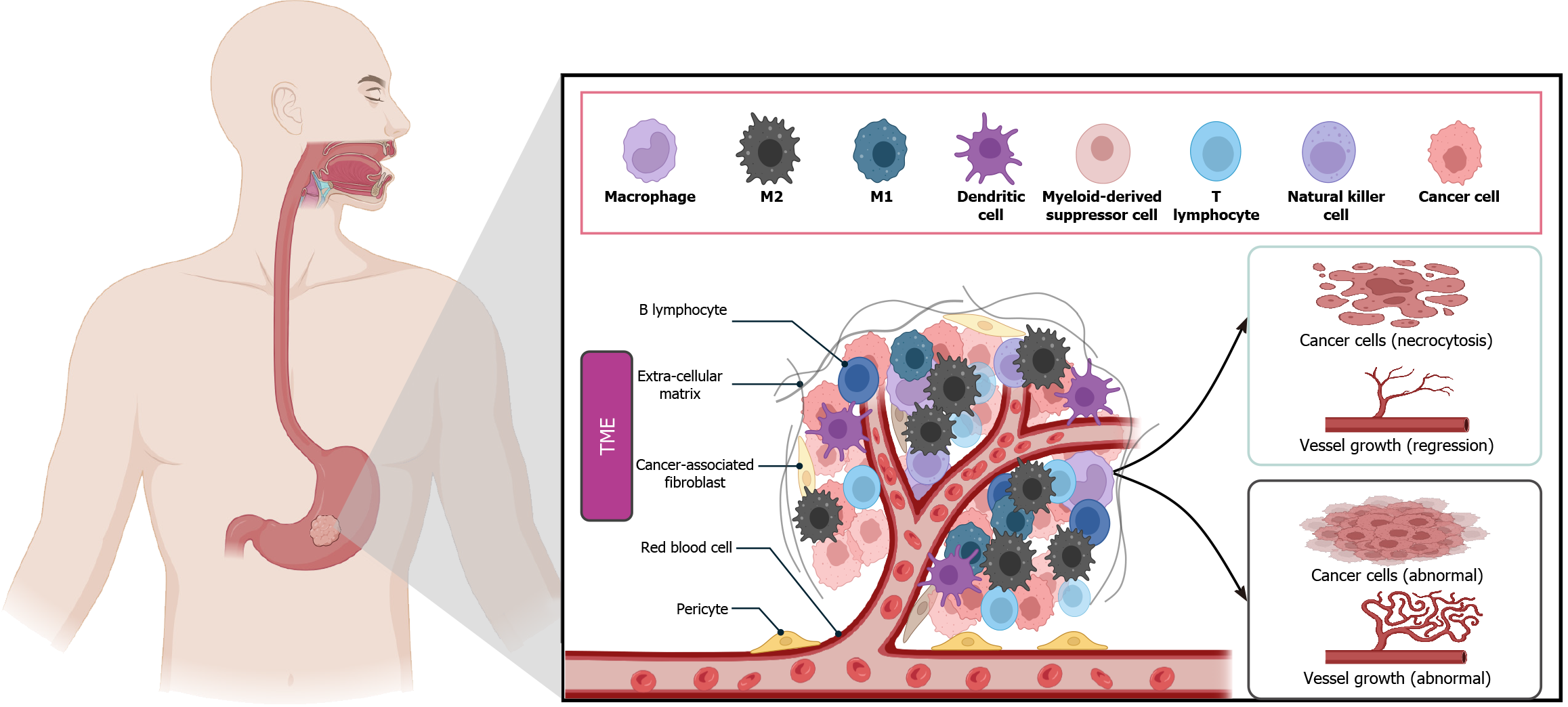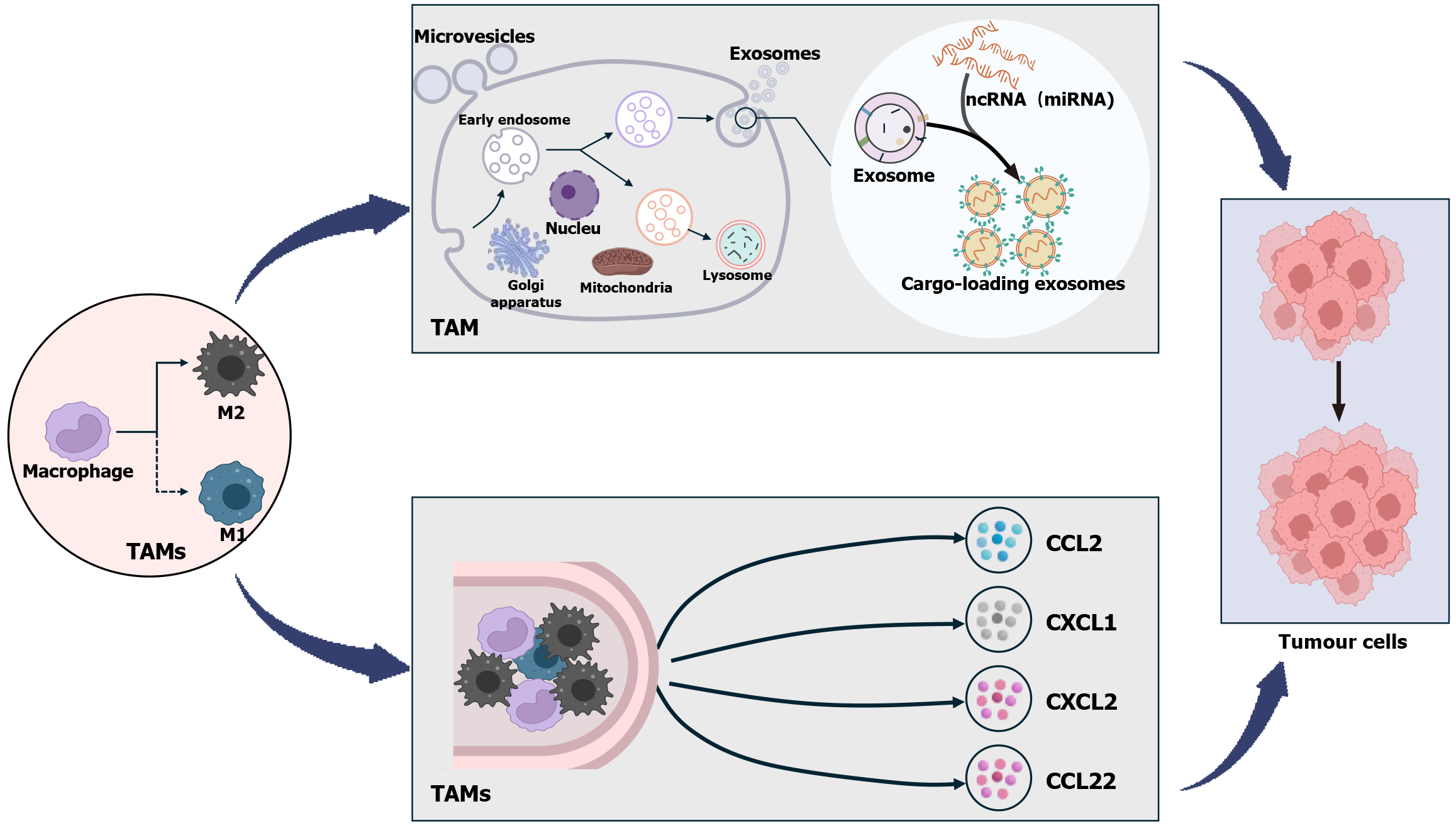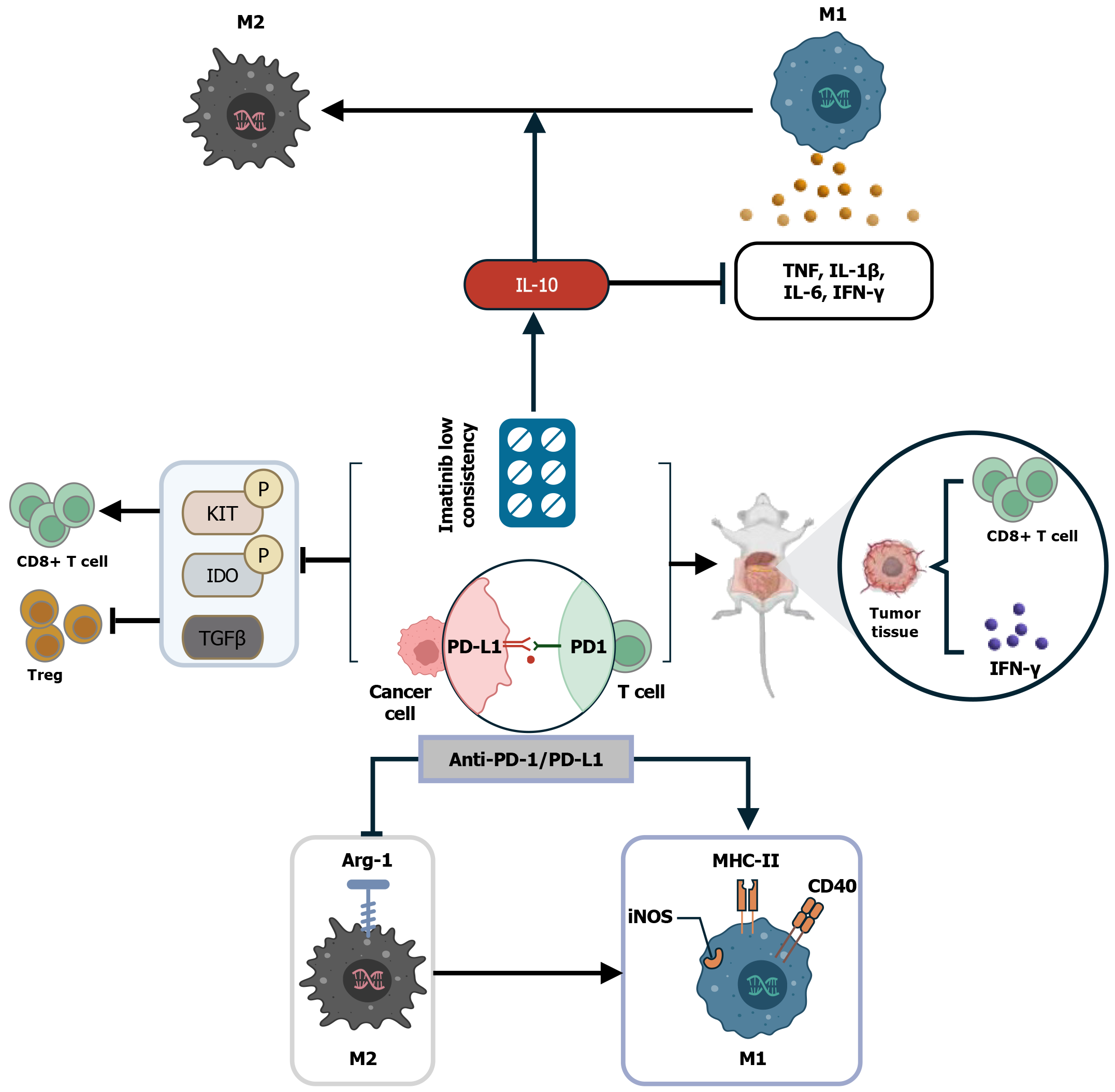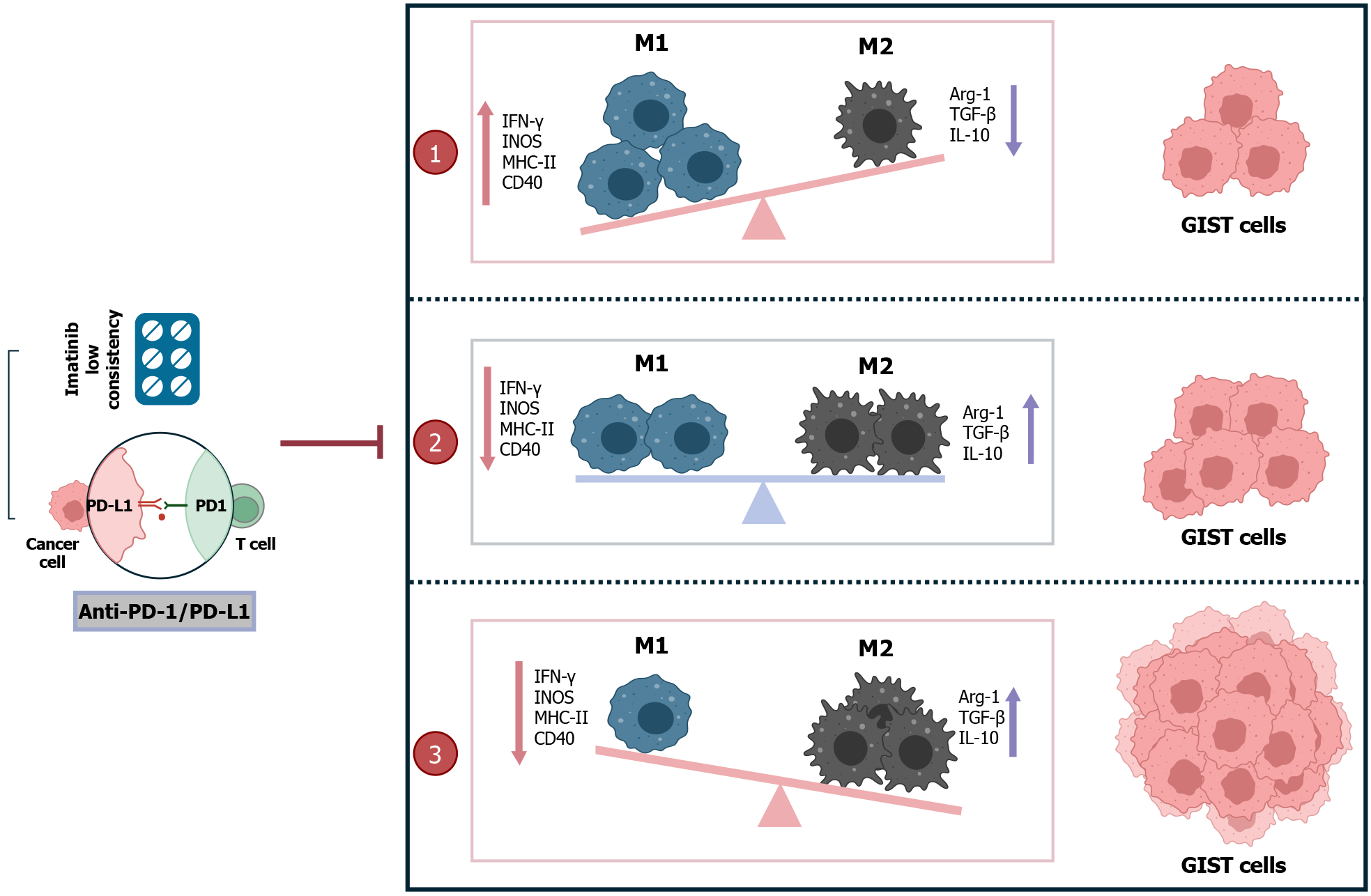Copyright
©The Author(s) 2024.
World J Gastrointest Oncol. Jul 15, 2024; 16(7): 2915-2924
Published online Jul 15, 2024. doi: 10.4251/wjgo.v16.i7.2915
Published online Jul 15, 2024. doi: 10.4251/wjgo.v16.i7.2915
Figure 1 Tumor-associated macrophages have dual potential in the tumor microenvironment.
TME: Tumor microenvironment.
Figure 2 Tumor-associated macrophages can promote tumor cell progression through a variety of pathways.
CCL: CC ligand; CXCL: CXC ligand; miRNA: MicroRNA; ncRNA: Non-coding RNA; TAM: Tumor-associated macrophage.
Figure 3 Low expression of secreted protein acidic and rich in cysteine 1 in gastrointestinal stromal tumor promotes the proliferation of blood vessels and tumor cells.
CCL: CC ligand; GIST: Gastrointestinal stromal tumor; SPARCL1: Secreted protein acidic and rich in cysteine 1.
Figure 4 Imatinib combined with anti-programmed death receptor-1/programmed death ligand-1 therapy can inhibit M2 polarization of tumor-associated macrophages.
IDO: 2,3-dioxygenase; IFN: Interferon; IL: Interleukin; PD-1/PD-L1: Programmed death receptor-1/programmed death ligand-1; TGF: Transforming growth factor; TNF: Tumor necrosis factor.
Figure 5 Inhibiting the generation of M2 tumor-associated macrophages is important for tumor progression.
GIST: Gastrointestinal stromal tumor; IFN: Interferon; IL: Interleukin; PD-1/PD-L1: Programmed death receptor-1/programmed death ligand-1; TGF: Transforming growth factor.
- Citation: Wang XK, Yang X, Yao TH, Tao PX, Jia GJ, Sun DX, Yi L, Gu YH. Advances in immunotherapy of M2 macrophages and gastrointestinal stromal tumor. World J Gastrointest Oncol 2024; 16(7): 2915-2924
- URL: https://www.wjgnet.com/1948-5204/full/v16/i7/2915.htm
- DOI: https://dx.doi.org/10.4251/wjgo.v16.i7.2915













